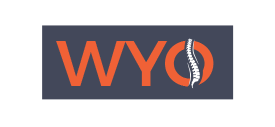Pseudarthrosis/Nonunion
Pseudarthrosis is an unhealed broken bone, also known as nonunion. Usually, damaged or broken bones heal over time by forming new bone tissue connecting the damaged pieces of the bone. However, if the damaged bone fails to heal then it is called ‘nonunion’ or ‘pseudarthrosis’. Pseudarthrosis refers to the formation of a false bone due to improper healing.
Pseudarthrosis or Nonunion due to failed or previous cervical surgery
The poor healing of bone in the neck region is usually due to the failure of cervical surgery (e.g. cervical fusion) that leads to the formation of a nonunion. Usually, post-surgery, damaged cervical bones heal by forming new bone tissue between the cervical bones. However, if the cervical bone fails to heal, then it results in the formation of a nonunion or pseudarthrosis. The reason is perhaps due to the unhealed tissues that do not heal bone well, inadequate bone placed into the fusion area, excessive motion across the fusion area limiting healing, infection, and suboptimal alignment or fusion technique.
Cervical bone fusion surgery primarily includes immobilization of the cervical bones after proper alignment, which initiates the natural healing process and provides stability to the bone. Immobilization includes placing casts, braces, metal plates or screws, intramedullary nails, and external fixators to hold the cervical bones in position until they heal.
Causes
Nonunion is a serious complication of cervical fusion surgery. It occurs when the cervical bones detach to such an extent that the stability and the blood flow of the bone are impaired.
Risk factors of nonunion include:
- Smoking or tobacco use
- Older age
- Severe anemia
- Diabetes
- Infection
- Medications such as Non-Steroidal Anti-Inflammatory Drugs (NSAID’s)
- Poor diet (low protein, Calcium, Vitamin C, and Vitamin D)
Controlling risk factors can prevent the chance of developing a nonunion.
Symptoms
Nonunion may cause pain in the neck or at the surgical site, lasting for months or years. It can be a continuous pain or associated with neck movements.
Diagnosis
Your physician diagnoses nonunion based on the findings such as pain at the surgical site, persistent gap with no bone over the surgical site, or inadequate or no progress in bone healing. The physician confirms the nonunion diagnosis after checking the damaged cervical bone and its progress of healing using imaging studies such as X-ray, CT (computed tomography), and MRI (magnetic resonance imaging) scan. In rare cases, blood tests can help determine the cause of nonunion formation, such as with infection and other conditions that slow bone healing such as diabetes and anemia.
Treatment
Treatment of nonunion comprises both non-surgical and surgical approaches, among which the physician decides the appropriate one based on your condition.
Non-surgical treatment
The most common non-surgical treatment includes using a bone stimulator, a small device that delivers ultrasonic or pulsed electromagnetic waves, to stimulate the healing process. To obtain the best results, the bone stimulator should be used daily for at least 20 minutes to an hour.
Surgical treatment
The surgical approach is recommended only if non-surgical approaches fail to show improvement. The available surgical option includes bone graft or bone graft substitute.
Bone graft or bone graft substitute: Bone graft or its substitute helps in escalating the healing process. Bone graft provides fresh bone cells and the naturally occurring chemicals that play an important role in the process of bone healing. Allograft (cadaver bone) avoids collection of bone from patients and avoids pain, but has a risk of infection. Bone graft substitute unlike bone graft does not provide fresh bone cells for normal healing; however, it does contain chemicals that the body needs to make bone.
Bone graft or graft substitute alone does not provide stability to the surgical site. Other surgical procedures such as internal fixation and external fixation may be needed to provide stability to the surgical site.



 Pay Your Bill
Pay Your Bill Request an Appointment
Request an Appointment

 Driving Directions
Driving Directions